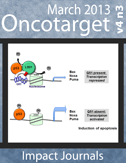The journey of resveratrol from yeast to human

Abstract
The natural polyphenolic compound resveratrol was first discovered in the 1940s. In the recent years, this compound received renewed interest as several findings implicated resveratrol as a potent SIRT1 activator capable of mimicking the effects of calorie restriction, and regulating longevity in lower organisms. Given the worldwide increase in age-related metabolic diseases the beneficial effects of resveratrol on metabolism and healthy aging in humans are currently a topic of intense investigation.
Resveratrol (3,5,4'-trihydroxystilbene) was first isolated from the roots of white hellebore (Veratum grandiflorum O. Loes) in 1940 [1], and later, in 1963 from the roots of Polygonum Cupsidatum, a plant used in traditional Chinese and Japanese medicine [2]. However, the first real interest in this compound came when in 1992 resveratrol was postulated to explain some of the cardio-protective effects of red wine [3] and was suggested to be an important factor in the French Paradox, a term coined to describe the observation that the French population has a very low incidence of cardiovascular disease, despite a diet high in saturated fat [4]. Five years later, in 1997, Jang and colleagues reported resveratrol to work as a chemo-preventive agent, by the ability to inhibit carcinogenesis at multiple stages [5]. Meanwhile, also anti-inflammatory and anti-oxidant properties were identified for resveratrol (see reference [6, 7] for review). Interest in resveratrol peaked after 2003, when Howitz and colleagues [8] identified resveratrol as a potent SIRT1 activator capable of mimicking the effects of calorie restriction [9, 10] and regulating longevity in lower organisms, by extending lifespan in yeast [8], worms [11], flies (although some controversy remains for this organism [12, 13]) and in short-lived fish [14]. Although there are a considerable amount of data supporting the role for resveratrol in SIRT1-mediated lifespan extension, recent data by Burnett et al. [15], however, suggest that SIRT1 may not increase longevity in Caenorhabditis elegans and Drosophila melanogaster. Currently the exact role of resveratrol and SIRT1 in longevity is still under debate. What however remains uncontested is that resveratrol does appear to delay or attenuate many age-related chronic diseases in animal models [16]. Given these beneficial effects in animal models, the eventual therapeutic effects of resveratrol merit to be investigated in humans. The first reports of such studies are demonstrating that also in human metabolic diseases, resveratrol may improve overall metabolic health status [17, 18].https://www.aging-us.com/article/100445/text
oncoscience impact factor Blagosklonny
Mikhail (Misha) V. Blagosklonny graduated with an MD and PhD from First Pavlov State Medical University of St. Petersburg, Russia. Dr. Mikhail V. Blagosklonny has then immigrated to the United States, where he received the prestigious Fogarty Fellowship from the National Institutes of Health. During his fellowship in Leonard Neckers’ lab at the National Cancer Institute (NCI), he was a co-author of 18 publications on various biomedical themes, including targeting HSP90, p53, Bcl2, Erb2, and Raf-1. He also was the last author for a clinical phase I/II trial article.
After authoring seven papers during a brief yet productive senior research fellowship in the El-Deiry Cancer Research Lab at the University of Pennsylvania, Dr. Blagosklonny returned to NCI to work with Tito Fojo. Together, they published 26 papers. Moreover, Dr. Blagosklonny published many of experimental research papers and theoretical papers as sole author. The abovementioned sole-author articles discussed two crucial topics. The first of these discussed selectively killing cancer cells with deregulated cell cycle or drug resistance via verifying their resistance. The outcomes and underlying notion were so revolutionary that they were incorrectly cited by other scientists as “reversal of resistance,” even though the publication was titled, “Exploiting of drug resistance instead of its reversal.” One big supporter of this concept was the world-famous scientist Arthur Pardee, with whom Dr. Blagosklonny co-authored a joint publication in 2001.
The second theme throughout Dr. Blagosklonny’s sole-author articles is a research method to develop knowledge by bringing several facts together from seemingly irrelevant areas. This results in new notions with testable forecasts, which in turn can be “tested” via analyzing the literature further. Likewise, the concept was co-authored by Arthur Pardee in a 2002 article in Nature. The first success of the new research methodology was the description of the feedback regulation of p53, as confirmed by the discovery of mdm2/p53 loop; and the explanation why mutant p53 is always overexpressed, published in 1997. The most important result revealed by Dr. Blagosklonny’s research methodology is the hyperfunction (or quasi-programmed) theory of aging and the revelation of rapamycin as an exclusively well-tolerated anti-aging drug, published in 2006. As mentioned in Scientific American, Michael Hall, who discovered mTOR in 1991, gives Dr. Blagosklonny credit for “connecting dots that others can’t even see.”
In 2002, Dr. Blagosklonny became associate professor of medicine at New York Medical College. He agreed to accept responsibilities as a senior scientist at Ordway Research Institute in Albany, New York, in 2005, before receiving another position at Roswell Park Cancer Institute as professor of oncology in 2009.
Since coming to Roswell Park Comprehensive Cancer Center in 2009, Dr. Blagosklonny has studied the prevention of cancer (an age-related disease) via stopping organism aging - in other words, “preventing cancer via staying young.” His laboratory closely worked together with Andrei Gudkov’s and conducted research on the suppression of cellular senescence, namely suppression of cellular conversion from healthy quiescence to permanent senescence. This led to the discovery of additional anti-aging medicines beyond rapamycin. The cell culture studies were complemented by studies in mice, including several models like normal and aging mice, p53-deficient mice, and mice on a high-fat diet.
Dr. Blagosklonny has also published extensively on the stoppage of cellular senescence via rapamycin and other mTOR inhibitors, life extension and cancer stoppage in mice, and combinations of anti-aging medicines to be taken by humans. A rapamycin-based combination of seven clinically available medications has been named the “Koschei Formula” and is now used for the treatment of aging in patients at the Alan Green Clinic in Little Neck, New York.







